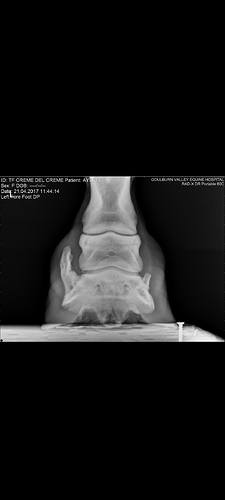I have a 16 year old mare who I have owned since she was a weanling. She has been ridden regularly since she was 4 and her feet have always been done on time and correctly. While ridden5-6 days a week it has never been hard riding or hard footing. Just pasture and trails.
Except for a period of LTLH issues while I found a new farrier , she was sound 100% of the time except for an abscess.
After the abscess we had several years of very mild off/on lameness. She would be off on the left front for a few weeks at the trot only and then it would resolve and she would be sound again for 18 months and it would happen again.
I thought the abscess was reoccurring. This past Decshe was running in pasture with the others and suddenly pulled up and was non weight bearing on that leg. I had the vet out right then , he x rayed and she has sidebone( what was causing her pain) as well as ringbone( non joint and not painful for her at all) .
His words to me were that this was the beginning of the end for her, basically. With shoes , pads and impression material between for cushioning, she is doing a lot better and I hope to do light riding come Spring if she is able. He talked of injections which I will pursue if she needs it. One of his horses has it too.
So all that to say I would be leery and not purchase a horse known to have the beginnings of it. I know things can go differently in each case but with my horse all it took was a good gallop in the field to change it all. A month later and it still bothers her, especially with the weather changes and it gets cold. mid 20’s and up she is much better.
Just to give you another perspective.



